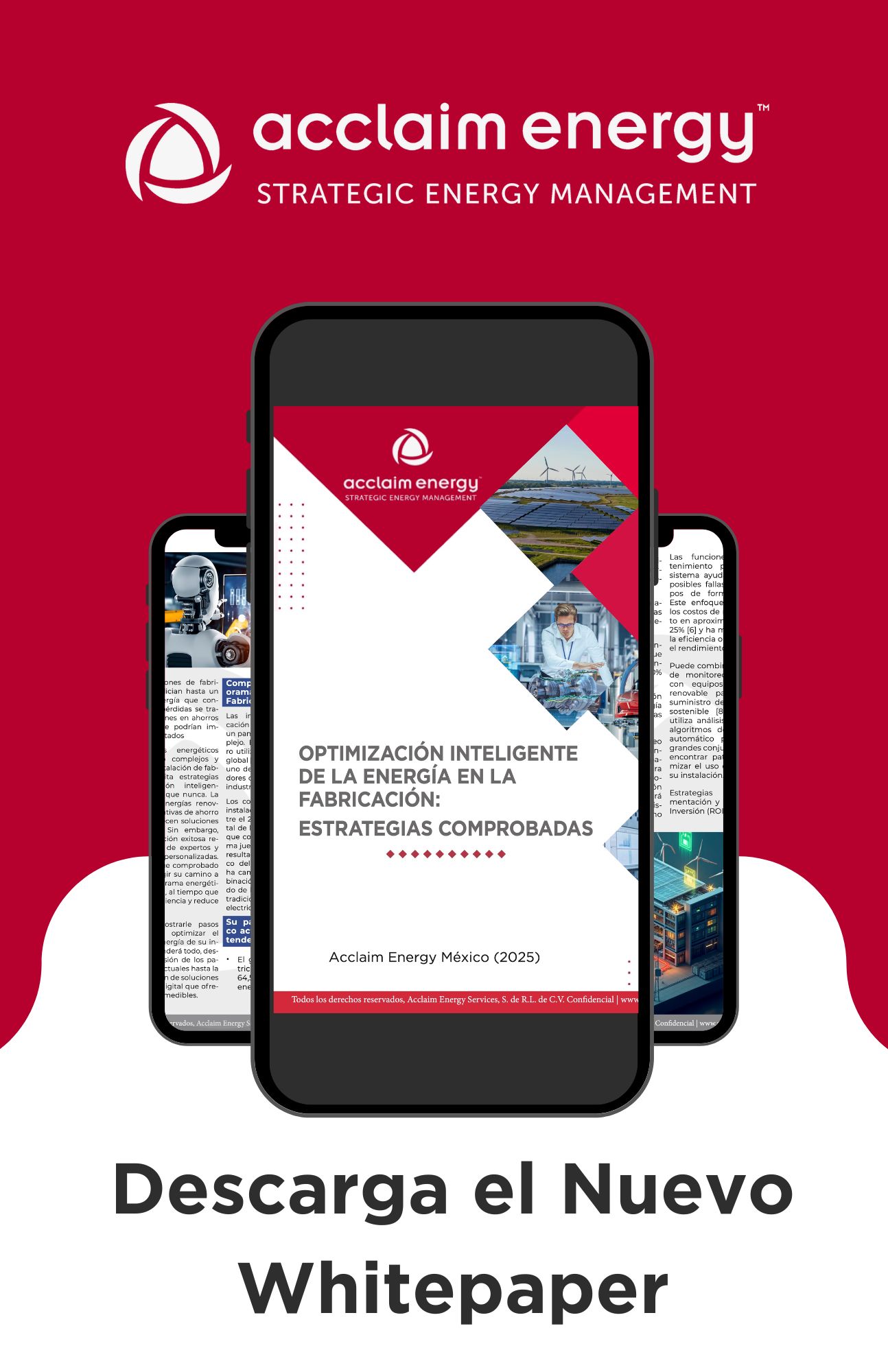Converting Market Uncertainty into a Competitive Advantage

President Lopez Obrador has always expressed skepticism about the 2014 energy reform and the messages by his administration in 2019 has underlined that belief. Unfortunately, this has created a level of regulatory and investment uncertainty around the Mexico energy market.
What can your business do under the current conditions?
While some may see this period as a time of trepidation, Acclaim sees this as a valuable opportunity for companies to start developing a comprehensive Strategic Energy Management (“SEM”) approach. This will empower businesses to make fully informed decisions regarding the optimization of energy costs and risks to secure a long-term competitive advantage.
The implementation of a robust SEM framework relies on three pillars of Planning, Action and Review (PAR):
- Planning: through the creation and enactment of a long-term energy strategy and policies aligned with corporate objectives (e.g. sustainability, efficiency, reliability)
- Action: by assessing, measuring, controlling and monitoring the variables and risks within your SEM framework. In this context, energy is treated as a core cost and managed proactively.
- Review: by performing periodic analysis to fully understand the market options available and their economic impact; and making the necessary adjustments to consider changes in market dynamics such as fundamentals, regulations, etc.
These three pillars must be supported by a strong data-driven structure where energy-related information such as consumption and costs are collected and stored to support the decision-making process and be able to measure effectiveness.
Some of the largest users of electricity in manufacturing, hospitality, steel and aluminum production in Mexico have benefited from this proven practice and now are poised to enjoy as much as 15 to 40% savings, thanks to adapting a SEM framework.
An initial step into SEM is a review of the electricity supply. By reviewing their current electricity supply, allows organizations to gain valuable insights into their energy consumption, and identify the best options for energy supply to reduce their electricity costs in 2019 and into the future. For example, by switching electricity providers from CFE, many of the industries attained:
- Significant savings with respect to the prevailing tariffs, which were somewhat higher due to generation costs versus other generators.
- A reduction in their companies’ carbon footprint, since their electricity would come from either a renewable or a combined-cycle generator.
An added benefit of this process was the company’s ability to start building the required infrastructure for the data-driven component of SEM. In other words, analysis of historical consumption data and patterns, which combined with other energy-related data and information, allowed them to identify potential optimization opportunities, as well as further enhance and refine their energy strategy.
While some have deferred making strategic decisions about electricity to a later date, it is worth noting that contacting a firm like Acclaim will enable your team to gain objective perspectives about the latest issues, opportunities and risks. Not exploring your options or investing in a SEM program today will cost you much more in the long run. Being disciplined and pragmatic is good, but you owe it to yourself and your business to explore new emerging options, that were not previously available. Last year in Mexico, we saw electricity rates increase by as much as 120%, so do not expose your business to that kind of volatility and be proactive to mitigate the impact of these changes on your bottom-line.
In the context of the Mexican energy market, companies have a great incentive to start a SEM program, as there are very competitive electricity suppliers with low prices generated from stable and environmentally friendly sources. Do not allow the media musings to keep you from engaging a firm like Acclaim to helping you understand your profile better, and what you can do to protect your business.
The Importance of Back-Up Metering and Self-Supply Contracts
Self-and qualified supply contracts have different obligations concerning the installation of backup meters. Companies with a self-supply contract are not obligated to install a backup meter unless CFE indicates otherwise; whereas qualified users are obligated to install a backup meter. The obligation for qualified supply emanates from chapter 3 in CENACE’s Manual de Medición para Liquidaciones issued in January 2018.
Acclaim strongly recommends its customers with a self-supply contract to install backup meters regardless of CFE’s opinion because there is no real downside to it. The backup meter allows you to have direct control and ownership over its consumption data, which, in turn, facilitates the reconciliation of invoices; and the analysis of consumption patterns to find potential optimization opportunities. This ability to analyze your historical consumption is a cornerstone component of the Strategic Energy Management (SEM) framework.
An additional advantage is that the backup meter is an asset for your company, as it is not transferred to CFE, which is what happens with the regular meter. For this reason, the installation of the backup meter would also serve as a capex expenditure and amortized over time. However, given the low cost of installation it is generally a non-issue.
| About the author(s) Victor Ureta, Director, Risk Management for Acclaim Energy Mexico Contact: vureta@acclaimenergy.comor Phone: (713) 858 – 2773 |
[1]A self-supply contract is when the electricity of a consumer is supplied directly from a generator. Qualified supply is when a consumer is being supplied from a qualified service supplier who, in turn, is a full participant of the energy market post-reform.



